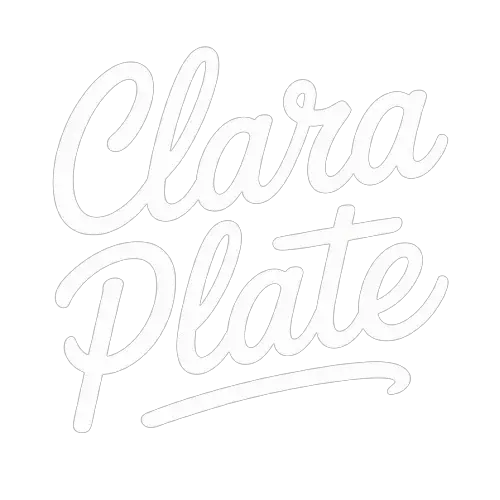I still remember the first time I tried to bake a potato on my own. I was twenty-one, standing in a tiny apartment kitchen that smelled more like old carpet than anything edible, and I thought, “How hard could it be?” I wrapped that poor potato in foil, cranked the oven up as high as it would go, and checked on it every ten minutes. The result was a sad, gray, mushy potato with skin that clung to my fork like damp paper.
I nearly swore off baked potatoes altogether. But over the years—through family dinners, potluck experiments, and a lot of trial and error—I learned that the secret to a perfect baked potato is patience, a hot oven, and a little bit of faith.
Today, a tray of crisp-skinned, fluffy-centered baked potatoes feels like home to me. It’s one of those recipes that asks for so little yet delivers comfort, nostalgia, and endless possibility.
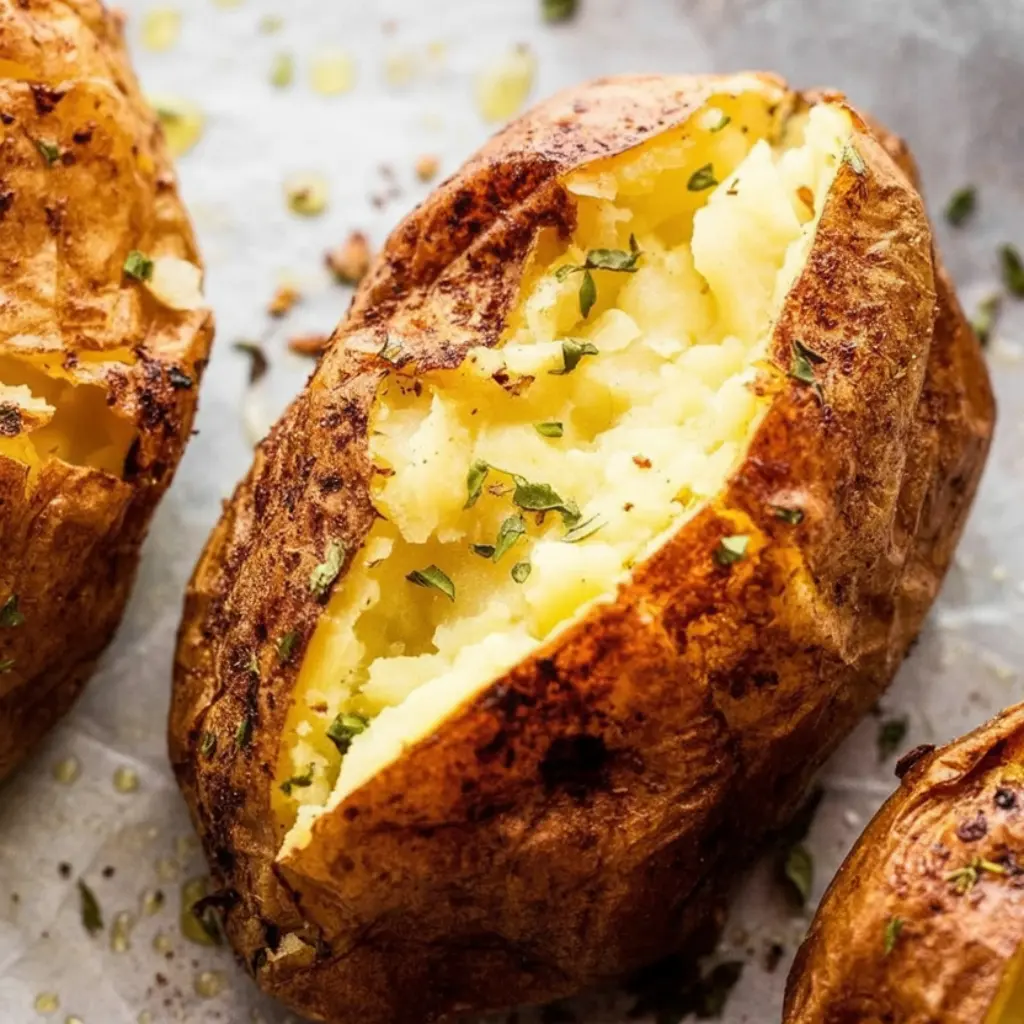
Why You’ll Love This Recipe
- Simple ingredients and no fancy tools required
- Inexpensive, filling, and family-friendly
- A blank canvas for endless toppings and variations
- Perfect for weeknights but impressive enough for company
- Stores and reheats beautifully, making leftovers a gift
Ingredients You’ll Need
For me, a good baked potato always starts with russets. They have that starchy, fluffy interior that’s just begging for butter. You’ll need about four medium russet potatoes, scrubbed well—I like to leave the skins on because they crisp up beautifully in the oven. A drizzle of olive oil is essential; it helps the skin blister and brown. I also rub mine generously with kosher salt before baking, which makes the crust irresistible. Beyond that, the toppings are where the fun begins. Butter is non-negotiable in my kitchen, but sour cream, shredded cheese, chives, or even leftover chili have all found their way onto baked potatoes at my table. If I’m out of olive oil, I’ve brushed the skins with melted butter, and though it’s a little richer, it’s equally delicious. And when I’ve only had Yukon Golds on hand, I baked those too—they don’t fluff up the same way, but their creamy texture still makes them worth it.
How to Make It (Step-by-Step Instructions)
First, start by preheating your oven to 425°F. This is one place I learned not to cut corners. I used to bake at 350°F, and while the potatoes did eventually cook, the skins never quite developed that satisfying crunch. While the oven heats, give your potatoes a good scrub under running water, then pat them completely dry with a towel. Moisture is the enemy of crisp skin.
Next, pierce each potato with a fork a few times. This isn’t just an old wives’ tale—without those little steam vents, potatoes can sometimes burst in the oven. It’s rare, but trust me, cleaning exploded potato from your oven racks is an experience I wouldn’t wish on anyone.
Rub each potato all over with olive oil, then sprinkle generously with kosher salt. I place mine directly on the oven rack, with a baking sheet on the rack below to catch any drips. This allows the hot air to circulate evenly around the potato, which is key to even cooking.
Bake for about 50–60 minutes, depending on the size of your potatoes. You’ll know they’re done when the skins feel crisp to the touch and a fork slides into the center with no resistance. Resist the urge to pull them early—undercooked potatoes are dense and gummy, and there’s no saving them once they’re out of the oven.
When they’re ready, use a knife to slice down the middle, gently pressing the ends toward each other to fluff up the insides. From there, add your favorite toppings, whether that’s a pat of butter melting into the steam or a full spread of sour cream, cheese, and bacon crumbles.
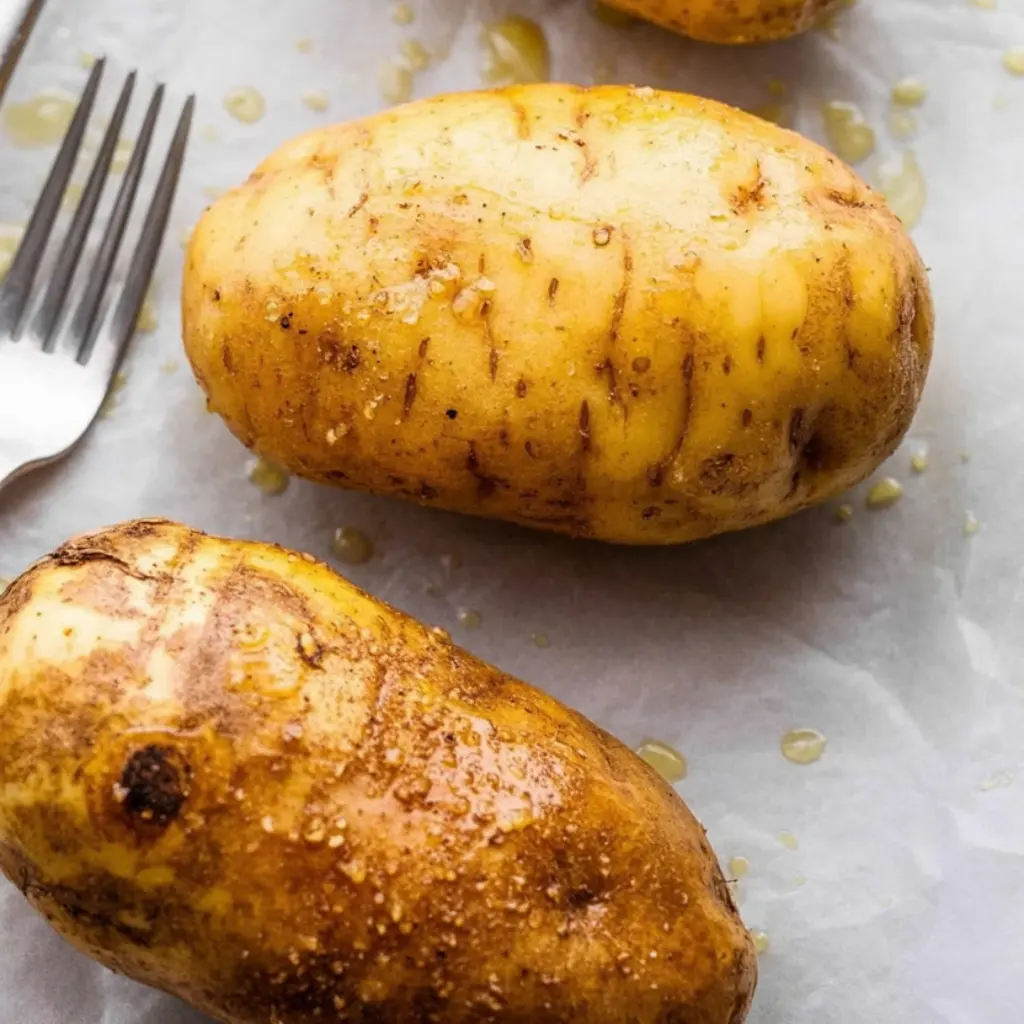
Expert Tips for the Best Results
Over the years, I’ve learned that the two most important factors in a truly great baked potato are high heat and patience. Don’t wrap them in foil—it steams the potato and robs you of that crisp, crackling skin. Always give them enough time to cook fully through; I often start them while I’m prepping the rest of dinner so they have a good hour in the oven. And when in doubt, leave them in for a few extra minutes. A slightly overdone potato will still be fluffy and forgiving, while an underdone one will never reach its potential.
Variations & Substitutions
Some of my favorite kitchen discoveries have come from not having what I thought I needed. Once, when I was out of sour cream, I topped a baked potato with plain Greek yogurt, and I’ve used it ever since when I want something tangy but a little lighter. Leftover roasted vegetables tossed on top make a hearty, colorful version, and I’ve even made a full meal out of one by spooning leftover beef stew over the top. If russets aren’t available, Yukon Golds or even sweet potatoes can be baked the same way, each bringing its own charm. One winter, I swapped olive oil for bacon drippings, and let’s just say no one at the table complained.
Serving Suggestions
Baked potatoes are wonderfully versatile—they can be the star of the plate or a humble side. I love serving them with roasted chicken or steak when I want a classic meat-and-potatoes dinner, but I’ve also laid out a baked potato bar for friends, with toppings ranging from shredded cheese and broccoli to pulled pork. It’s interactive, it’s easy, and it feels like a party without much effort. For a comforting weeknight meal, I’ll often bake a couple of potatoes and top them with chili, letting the potato soak up the sauce like a sponge.
Storage & Reheating Instructions
If you end up with leftovers, let the potatoes cool completely before tucking them into an airtight container. They’ll keep well in the refrigerator for up to four days. To reheat, I avoid the microwave when I can because it makes the skins rubbery. Instead, I place them back in a hot oven—about 375°F—for 15 minutes or so, which revives the crispy exterior while warming the insides through. The texture won’t be exactly as it was fresh from the oven, but they’re still wonderfully satisfying.
Recipe FAQs (Answered by Clara)
Can I make these ahead of time?
You sure can. I often bake a batch in the morning, keep them wrapped in a towel to stay warm, and then reheat them briefly in the oven before dinner.
What’s the best potato for baking?
Russets are my go-to for that fluffy interior, but Yukon Golds are lovely if you want a creamier texture. Sweet potatoes also bake beautifully with the same method.
Should I wrap them in foil?
I don’t recommend it. Foil traps steam and gives you soft skin instead of that crisp, salty crust that makes baked potatoes so good.
How do I know when they’re done?
I press the skins—they should feel firm and crackly. A fork should slide into the center like butter. If there’s resistance, give them more time.
Conclusion
Baked potatoes may seem simple, but I’ve found that the simplest foods are often the ones we remember most fondly. This is a recipe I turn to when I want comfort without fuss, and it never fails to bring a little warmth to the table. I’d love for you to try this version, make it your own with your favorite toppings, and share how it turned out. Cooking is always better when it’s shared, whether that’s around your family’s dinner table or in the comments below.
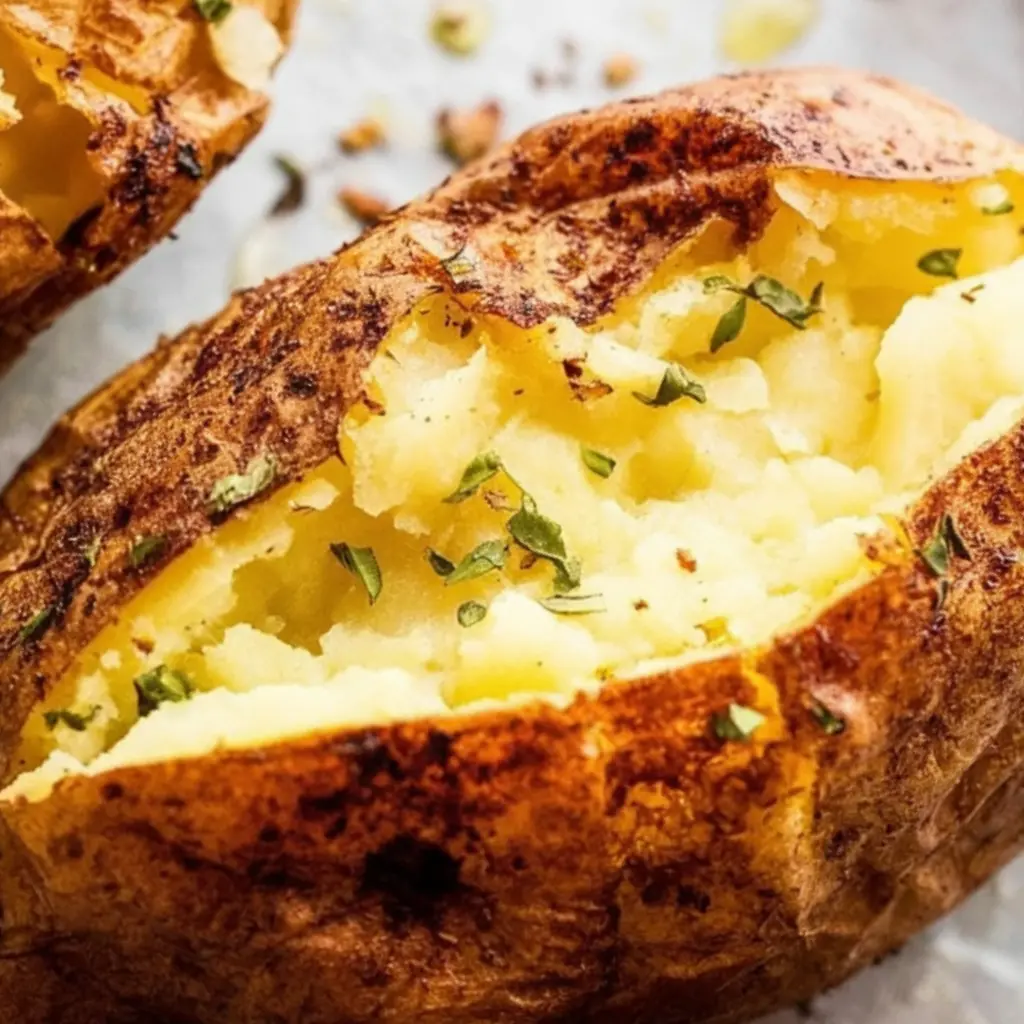
Nutrition Information (per medium russet potato, without toppings)
Calories: 160
Carbohydrates: 37g
Protein: 4g
Fat: 0g
Fiber: 4g
Sodium: depends on salt added
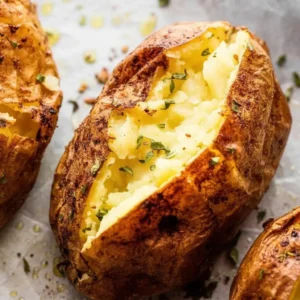
Baked Potatoes
Ingredients
- 4 large russet potatoes
- 2 tbsp olive oil or melted butter
- 1 tbsp coarse salt
- Optional toppings: sour cream shredded cheese, bacon bits, chives, butter
Instructions
- Preheat oven: Preheat oven to 425°F (220°C).
- Prepare potatoes: Scrub potatoes clean and pat dry. Pierce each potato several times with a fork.
- Season: Rub potatoes with olive oil and sprinkle with coarse salt.
- Bake: Place potatoes directly on the oven rack or a baking sheet. Bake for 50–60 minutes, until skins are crispy and insides are soft when pierced with a fork.
- Serve: Slice open, fluff the insides with a fork, and top with butter, sour cream, cheese, or your favorite toppings.
Notes
- For extra crispy skins, bake directly on the oven rack with a baking sheet underneath to catch drips.
- Microwave for 5–7 minutes first, then bake for 30 minutes to cut down cooking time.
- Use russet potatoes for the fluffiest interior; Yukon golds will be creamier.
- Great loaded with chili, pulled pork, or veggies for a hearty meal.

